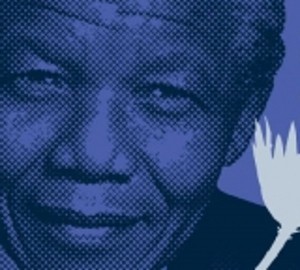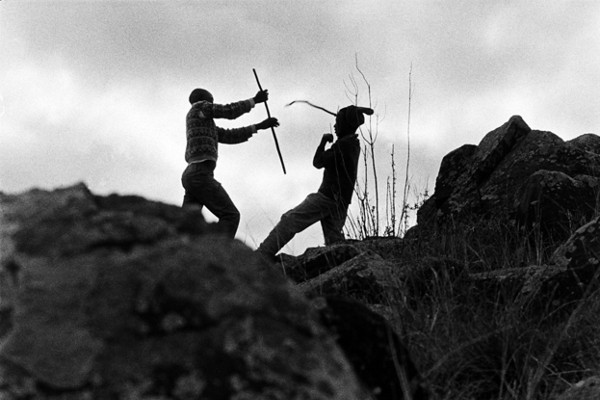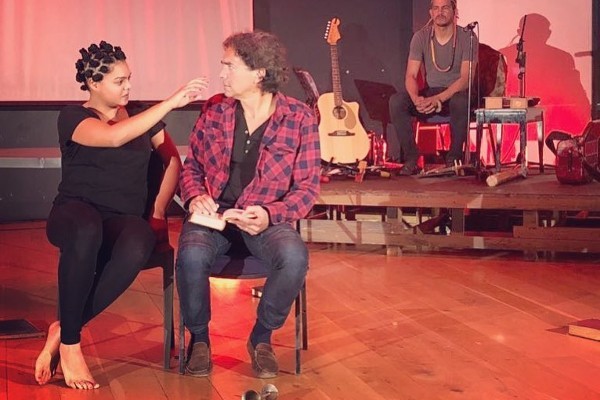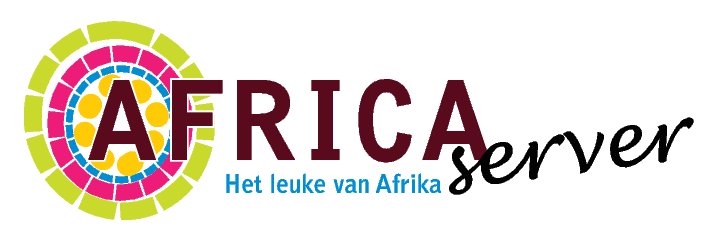Zondag 28 Oktober 2018

Tata Madiba. Father of our democracy: Father of our Nation.
The upgraded Tata Madiba exhibition content and objects are meant to stimulate conversation about his life, struggles and extraordinary contribution to protection of South Africa’s rich biodiversity; but also connect to contemporary issues around conservation and sustainability. The exhibition also includes the many species named after him and those he and his fellow prisoners may have encountered on Robben Island. The exhibition includes as its central piece the iMadiba Project which is a participatory art project conceptualized and created by artist and photographer Erhardt Thiel. It is endorsed by the Nelson Mandela Foundation The intention of the installation or micro museum is to facilitate dialogue, memory, reflection and forward thinking. The combination of the Tata Madiba exhibition and the iMadiba Project art installation is therefore an apt marriage to celebrate the centenary of this great statesman Nelson Rolihlahla Mandela.

concert: Nakhane (Zuid-Afrika)
Nakhane vliegt van Joburg naar Nederland, besprenkelt ons met zijn magic fairy dust en tovert de dansvloer om tot ‘a place of tenderness’. De zanger, schrijver, acteur en fakkeldrager voor LGBTQ-community brak door met zijn nieuwste album You Will Not Die. Hierop documenteert hij met hartverscheurende fragiliteit de troubles uit zijn puberteit, een die hij doorbracht in constante spagaat tussen zijn seksualiteit en zijn geloof. Dit is ook het onderwerp van zijn controversiële film Inxeba (controversieel want, verbannen in Zuid-Afrika) waarin hij het taboe van homoseksualiteit binnen de Xhosa-community aankaart. Suffice to say: onvoorwaardelijke acceptatie van zijn LGBTQ-family gaat hem aan het hart. En op dinsdag 30 oktober licht hij dat in BIRD mondeling toe op zwoele en opzwepende beats. In Bitterzoet (Amsterdam) en Bird (Rotterdam)

Mandela’s roots revisited - photographic exhibition by Bonile Bam
Bonile Bam’s photographic exhibition, Nelson Mandela’s roots revisited, hosted by the University of Johannesburg is different from other exhibitions, with its focus on the landscape where Mandela grew up, rather than Mandela himself. The imagery is at once hauntingly beautiful and evocative. Mandela himself hardly appears in the photographs that are exhibited. It is a unique exhibition in this focus on the physical landscape and pastoral setting in which Mandela grew up. Bam’s poetic images take us to the areas and invite us to imagine the young Mandela in the rural Eastern Cape in the early decades of the 20th Century. The photographs share rare moments and places through which Mandela lived. The exhibition is hosted by the University of Johannesburg Faculty of Humanities, in collaboration with the University Library and the National Institute for the Humanities and Social Sciences. The exhibition will then be simultaneously hosted there and at the three other UJ campuses: Soweto, Doornfontein and Bunting Road for two months.

Muziektheatervoorstelling - Krotoa: Eva van de Kaap
Zuid-Afrika 2018. Een Nederlandse acteur en een Zuid-Afrikaanse actrice ontmoeten elkaar op de filmset van Krotoa: Eva van de Kaap. Hij speelt Van Riebeeck, de VOC-koopman die in 1652 de kolonie op de Kaap stichtte. Zij speelt Krotoa, het Khoe meisje dat al heel jong in zijn huishouden terechtkwam en tolk werd tussen de Nederlanders en haar eigen volk. Krotoa was de eerste Khoe vrouw die gedoopt werd en officieel trouwde met een Europeaan. Zij kwam niet ongehavend uit de strijd tussen twee culturen. Op de filmset gaan de acteurs niet alleen in hun historische rol, maar ook met elkaar de confrontatie aan. Het Volksoperahuis maakt samen met een schrijver, regisseur, muzikant en actrice uit Zuid-Afrika het verhaal af dat drieënhalve eeuw geleden begonnen is. De muziektheatervoorstelling Krotoa: Eva van de Kaap is een regelrechte fusion: een meertalig, van perspectief wisselend, intercultureel, en bovenal muzikaal eerbetoon aan een gedeelde geschiedenis. Westerse harmonieën en akkoordenreeksen ontmoeten Afrikaanse ritmes. Talen: Engels, Afrikaans, Nederlands en Khoekhoegowab. Met Nederlandse (deel) vertalingen



